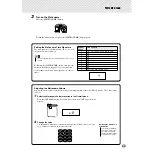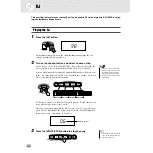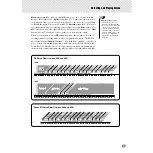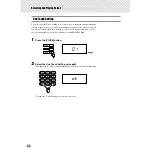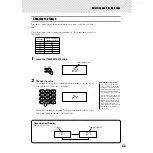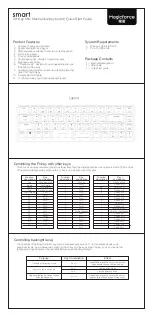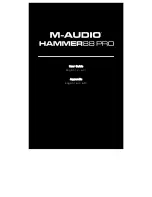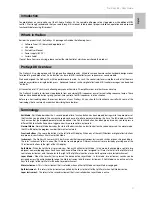
Step 4 Lesson
19
Grade
The EZ-150 has a built-in evaluation function that moni-
tors your practicing and — like a real teacher — tells you
how well you did each exercise. Four grades are assigned,
depending on your performance: “OK,” “Good,” “Very
Good,” and “Excellent.”
Want to find out more? See page 41.
Talking
This feature “talks” to you through the speakers,
“announcing” the Grade comments as well as the titles of
the Lesson steps.
Want to find out more? See page 42.
Light Guide
This convenient feature of the instrument lights the keys
in succession, showing you what keys you should play
when learning a song.
Want to find out more? See page 42.
Changing the Tempo
Naturally, you can change the tempo (speed) of the song
to your liking, letting you slow down difficult passages
and bring up the tempo gradually until you master them at
normal speed.
z
Press the [TEMPO/TAP] button.
x
Use the numeric keypad to set the desired
tempo.
19
• The EZ-150 also has a convenient Tap Tempo function that allows
you to “tap” a new tempo in real time. (See page 46.)
This step lets you work on the timing of the notes. In Les-
son 1, the particular note you play on the keyboard is
unimportant. The EZ-150 checks your timing and how
rhythmically “tight” your playing is.
Want to find out more? See page 38.
In Lesson 2, you practice playing the notes correctly as
they are indicated with the Light Guides. The accompani-
ment pauses and waits for you to play the notes correctly
before it continues.
Want to find out more? See page 39.
In Lesson 3, one of the parts is muted, and you practice
the missing part in time with the rhythm.
Want to find out more? See page 39.
Lesson 4 is just like Lesson 3, except that the parts for
both hands are muted, letting you practice the missing
parts in time with the rhythm.
Want to find out more? See page 40.
Lesson 1 — Timing
Lesson 2 — Waiting
Lesson 3 — Minus One
Lesson 4 — Both Hands
06
measure number
06
06
06



















